Abstract
OBJECTIVE: To describe and compare the role models of Quebec residents graduating from French-language faculties of family medicine and from medical specialities. DESIGN: Survey by mail. PARTICIPANTS: Quebec residents graduating in family medicine (189), medical specialities (147), and surgical specialities (64) in 1990. MAIN OUTCOME MEASURES: Number of models chosen, social, demographic, professional, and personal characteristics of primary role models, role models' influence on students. RESULTS: Role models chosen by family medicine graduates more closely resemble those of their medical speciality colleagues than those of their surgical speciality colleagues. Family medicine graduates, particularly female graduates, have more difficulty choosing models. Their choices are based mainly on qualities that reflect a biopsychosocial approach to care and concern with the community aspects of medical practice. CONCLUSION: Choosing role models is a complex process. Medical faculty in residency programs play an important role in the professional identity of future physicians.
Full text
PDF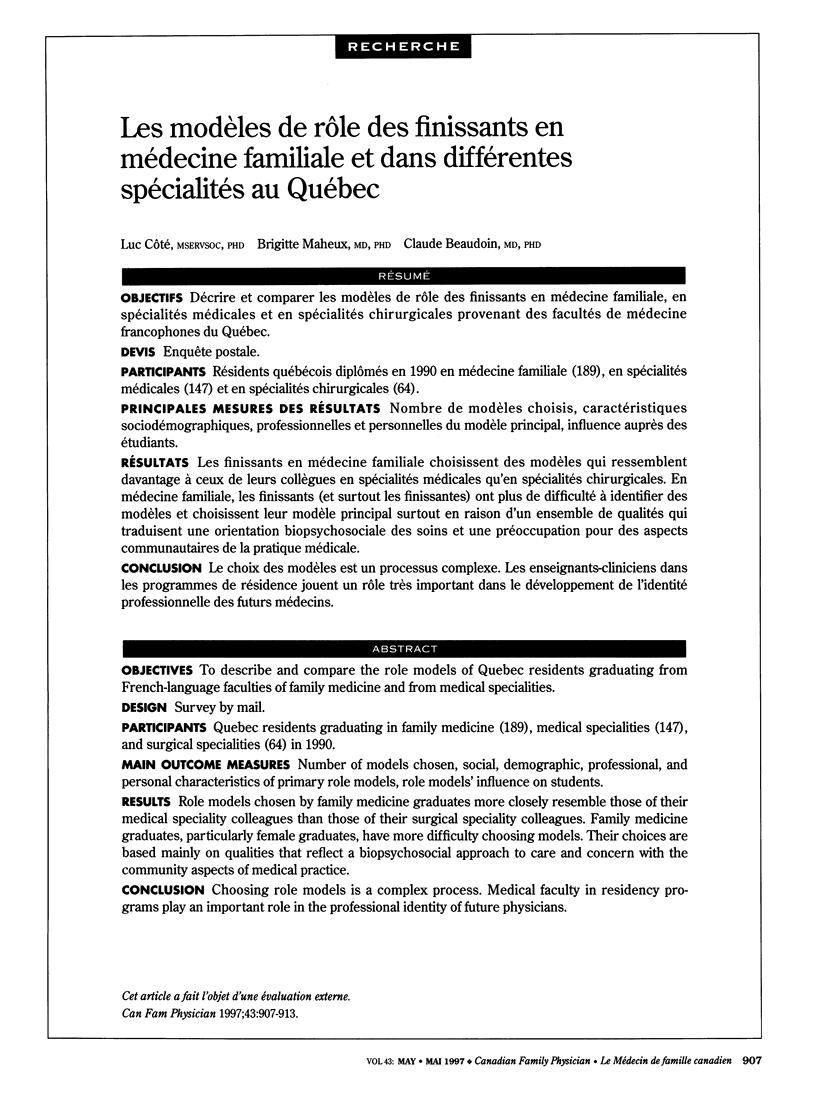

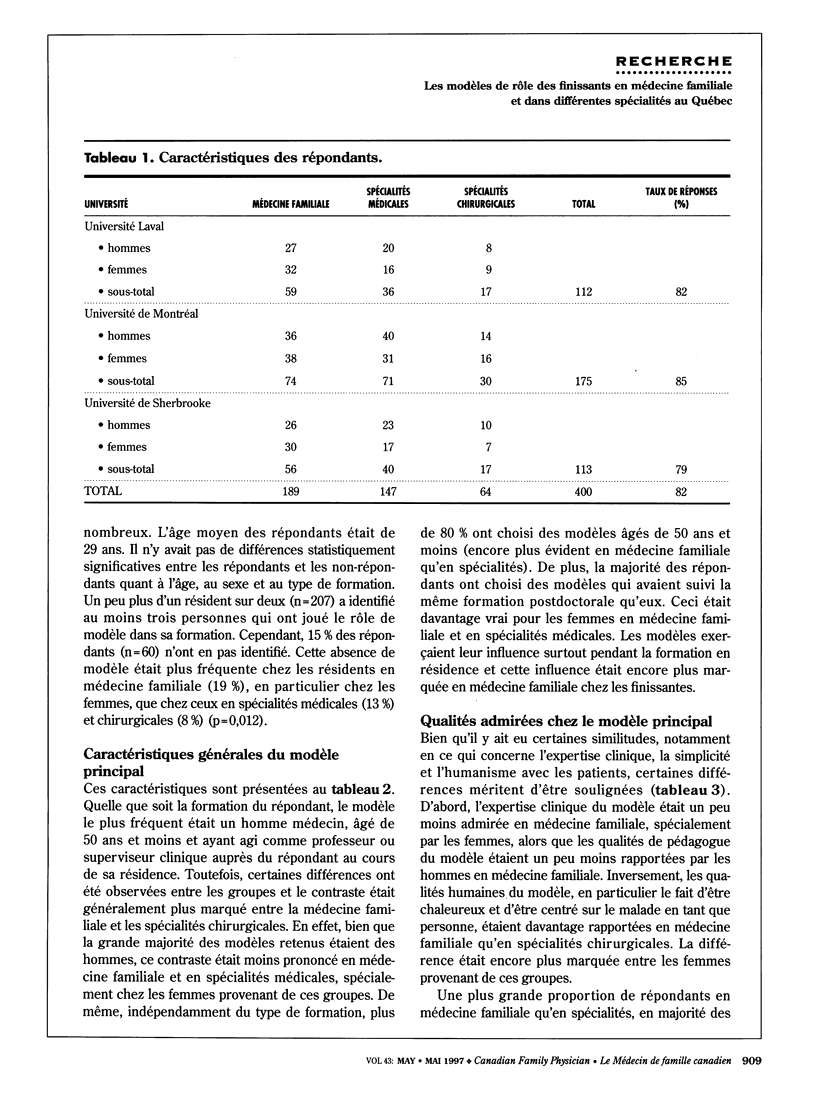
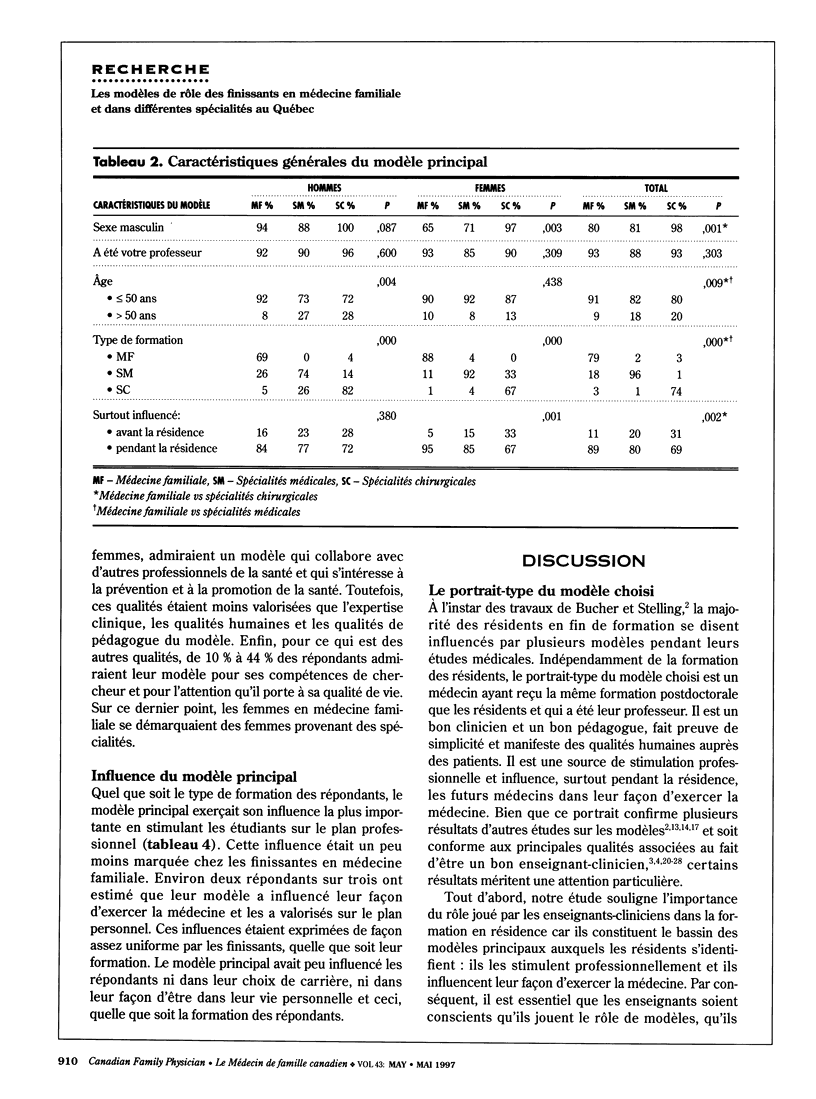
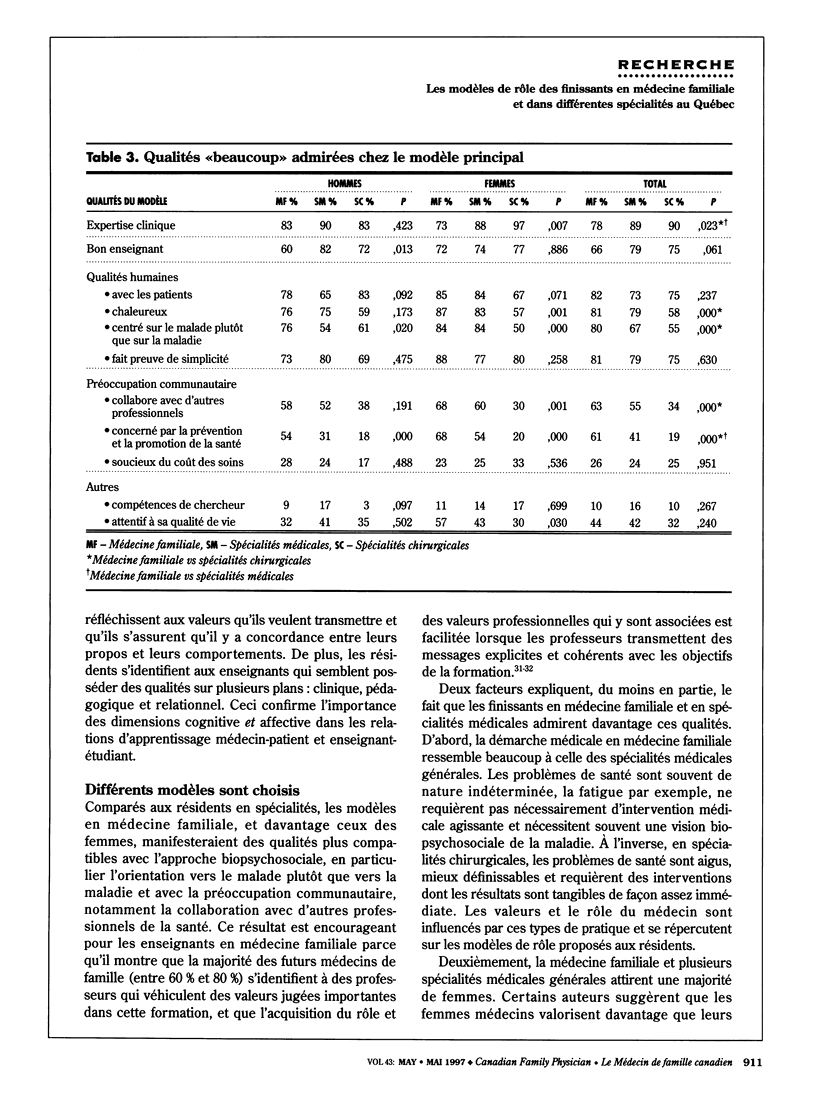
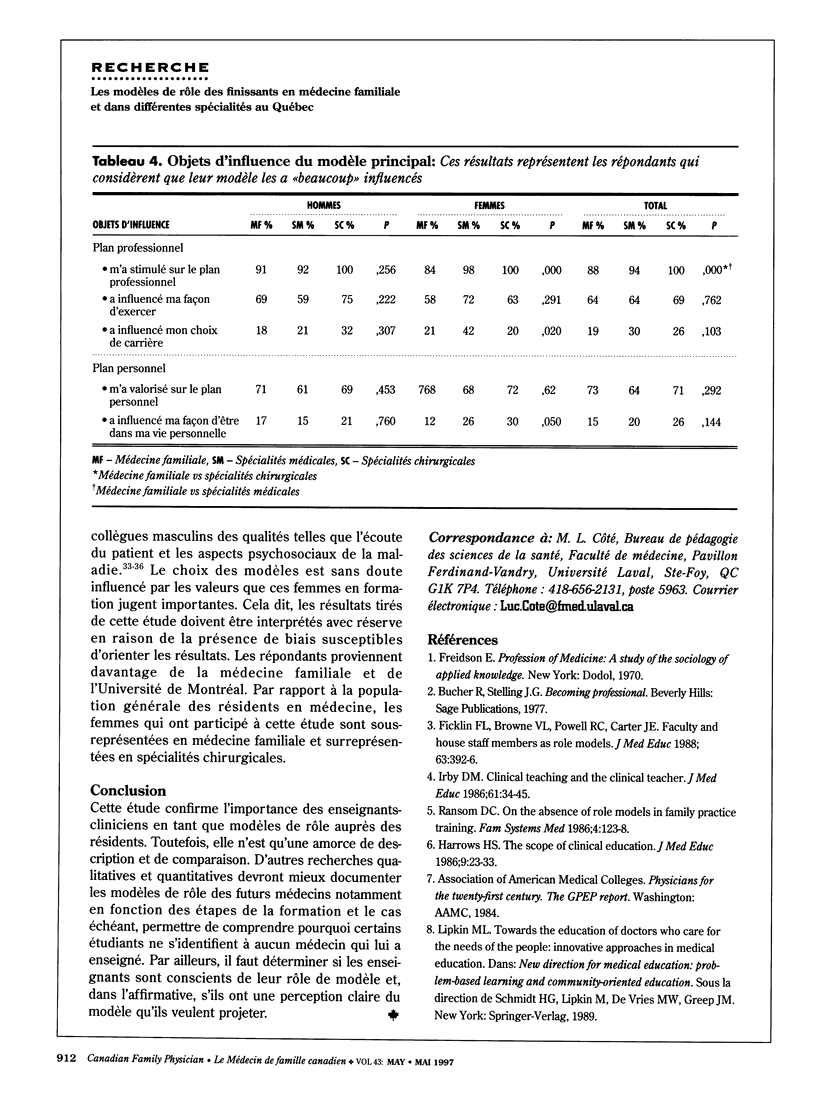
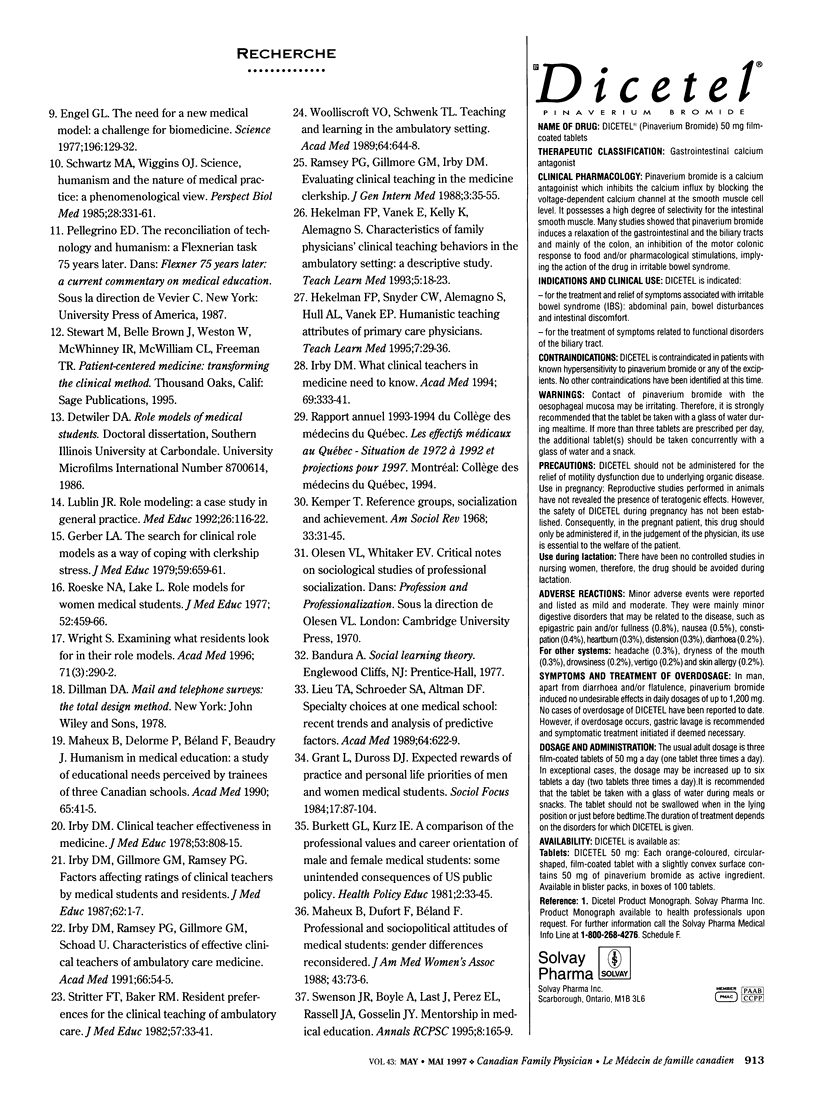
Selected References
These references are in PubMed. This may not be the complete list of references from this article.
- Burkett G. L., Kurz D. E. A comparison of the professional values and career orientations of male and female medical students: some unintended consequences of U.S. public policy. Health Policy Educ. 1981 Mar;2(1):33–45. doi: 10.1016/0165-2281(81)90003-5. [DOI] [PubMed] [Google Scholar]
- Engel G. L. The need for a new medical model: a challenge for biomedicine. Science. 1977 Apr 8;196(4286):129–136. doi: 10.1126/science.847460. [DOI] [PubMed] [Google Scholar]
- Ficklin F. L., Browne V. L., Powell R. C., Carter J. E. Faculty and house staff members as role models. J Med Educ. 1988 May;63(5):392–396. doi: 10.1097/00001888-198805000-00007. [DOI] [PubMed] [Google Scholar]
- Gerber L. A. The search for clinical role models as a way of coping with clerkship stress. J Med Educ. 1979 Aug;54(8):659–661. doi: 10.1097/00001888-197908000-00014. [DOI] [PubMed] [Google Scholar]
- Irby D. M. Clinical teacher effectiveness in medicine. J Med Educ. 1978 Oct;53(10):808–815. doi: 10.1097/00001888-197810000-00003. [DOI] [PubMed] [Google Scholar]
- Irby D. M., Gillmore G. M., Ramsey P. G. Factors affecting ratings of clinical teachers by medical students and residents. J Med Educ. 1987 Jan;62(1):1–7. doi: 10.1097/00001888-198701000-00001. [DOI] [PubMed] [Google Scholar]
- Irby D. M., Ramsey P. G., Gillmore G. M., Schaad D. Characteristics of effective clinical teachers of ambulatory care medicine. Acad Med. 1991 Jan;66(1):54–55. doi: 10.1097/00001888-199101000-00017. [DOI] [PubMed] [Google Scholar]
- Irby D. M. What clinical teachers in medicine need to know. Acad Med. 1994 May;69(5):333–342. doi: 10.1097/00001888-199405000-00003. [DOI] [PubMed] [Google Scholar]
- Kemper T. D. Reference groups, socialization and achievement. Am Sociol Rev. 1968 Feb;33(1):31–45. [PubMed] [Google Scholar]
- Lieu T. A., Schroeder S. A., Altman D. F. Specialty choices at one medical school: recent trends and analysis of predictive factors. Acad Med. 1989 Oct;64(10):622–629. [PubMed] [Google Scholar]
- Lublin J. R. Role modelling: a case study in general practice. Med Educ. 1992 Mar;26(2):116–122. doi: 10.1111/j.1365-2923.1992.tb00136.x. [DOI] [PubMed] [Google Scholar]
- Maheux B., Delorme P., Béland F., Beaudry J. Humanism in medical education: a study of educational needs perceived by trainees of three Canadian schools. Acad Med. 1990 Jan;65(1):41–45. [PubMed] [Google Scholar]
- Roeske N. A., Lake K. Role models for women medical students. J Med Educ. 1977 Jun;52(6):459–466. doi: 10.1097/00001888-197706000-00001. [DOI] [PubMed] [Google Scholar]
- Schwartz M. A., Wiggins O. Science, humanism, and the nature of medical practice: a phenomenological view. Perspect Biol Med. 1985 Spring;28(3):331–366. doi: 10.1353/pbm.1985.0008. [DOI] [PubMed] [Google Scholar]
- Stritter F. T., Baker R. M. Resident preferences for the clinical teaching of ambulatory care. J Med Educ. 1982 Jan;57(1):33–41. doi: 10.1097/00001888-198201000-00009. [DOI] [PubMed] [Google Scholar]
- Woolliscroft J. O., Schwenk T. L. Teaching and learning in the ambulatory setting. Acad Med. 1989 Nov;64(11):644–648. doi: 10.1097/00001888-198911000-00002. [DOI] [PubMed] [Google Scholar]
- Wright S. Examining what residents look for in their role models. Acad Med. 1996 Mar;71(3):290–292. doi: 10.1097/00001888-199603000-00024. [DOI] [PubMed] [Google Scholar]


